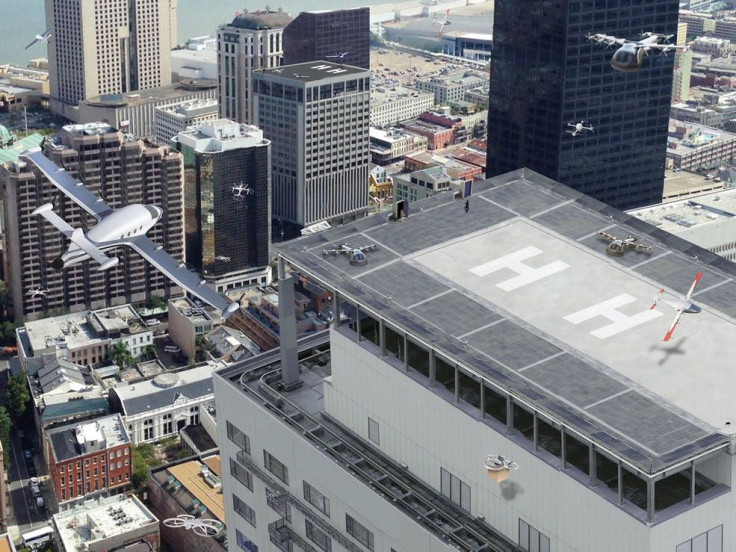NASA Is Working On Making Drones A Part Of Every City

When you think of NASA you probably think of the missions to the moon or the International Space Station but the agency has plans to start conducting some work closer to the Earth’s surface soon.
The agency’s Aeronautics Research Mission Directorate is working on research and implementation of Urban Air Mobility or UAM for the coming years. NASA defines UAM as “a safe and efficient system for air passenger and cargo transportation within an urban area,” said a release from NASA. These include small package delivery, like drone or Unmanned Aerial Systems (UAS) deliveries, and other services that could be controlled from onboard, on the ground or could potentially be autonomous.
Not only is NASA working on developing these technologies as it has for the past six or so years, but it’s also working to create more successful management of those technologies. Part of this was done through the UAS Traffic Management project that was started in 2015. The hope is that this research will allow smaller drones to fly low but also safely in an area of the sky that isn’t typically regulated.
NASA’s role in the research will be to provide technical expertise in certain areas of the somewhat uncharted field. Factors that are of important for forming regulations around the safety of these vehicles have to do with many areas NASA is already researching. These include community noise impacts, cyber security protections, autonomous vehicle certification and others, according to a NASA release. This wealth of data puts NASA in the perfect position to offer guidance with influencing the manufacturing side of things.
“We have a unique role to play in leading collaborative efforts that leverage the knowledge, technologies and visions of everyone coming to the table,” Rich Wahls, NASA strategic technical advisor, said in the release.
An increase in urban air technologies means more efficient delivery of goods and possible one day of people as well. So NASA is getting in at the start to help ensure the development of such technologies is done as safely as possible.
Some companies have already started work on integrating these technologies with their business. Amazon introduced drones to its delivery fleet with Amazon Prime Air and Dominos made it’s first pizza delivery by drone last year. Both companies used the drones in fairly rural areas, not a cityscape, but both deliveries are still indications that the future of deliveries will involve drones.
“We plan to conduct the research and development, and test the concepts and technologies that establish feasibility and help set the requirements. Those requirements then serve to make using autonomous vehicles, electric propulsion, and high density airspace operations in the urban environment safe, efficient and economically viable,” Jaiwon Shin, associate administrator for aeronautics at NASA said.
© Copyright IBTimes 2025. All rights reserved.




















